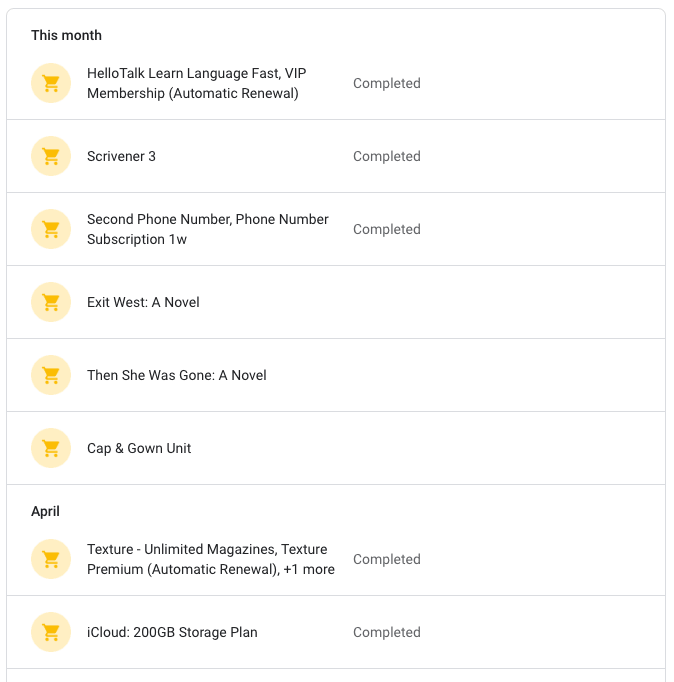
For years Google has been keeping track of nearly every online purchase we’ve made. A CNBC report today reveals that, thanks to purchase receipts sent to personal Gmail accounts, the company has amassed a mountain of purchasing data on each of us, including offline spending, in some cases.
Better still, Google has a tool that lets you view your previous purchases in what it calls a “private destination” only seen by you. For me, this purchase history dates back to 2012 — the year I created my current Gmail account. Before we break out the tinfoil hats, it’s worth noting that there’s nothing extraordinary to see here. My purchases, for example, make me look about as boring as I feel most days — a lot of books, a few apps, and a handful of games.
You can see your purchases here.

My girlfriend’s purchase history is a lot more interesting — our Amazon account is linked to her Gmail address. It’s there that Google could potentially find some intimate details, if it so chose. Not in our case, of course, as we’re both supremely boring individuals. But generally speaking this purchase data could reveal a lot about a person. It could point to an affair, for example (hotel receipts, clothing or gifts never given to a spouse), or let the cat out of the bag on an unannounced pregnancy. Google’s ledger, and the data within it, could track everything from mental illness to a woman’s menstrual cycle, all based on purchase data.
A Google representative told The Verge:
To help you easily view and keep track of your purchases, bookings and subscriptions, we’ve created a private destination that can only be seen by you. You can delete this information at any time. We don’t use any information from your Gmail messages to serve you ads, and that includes the email receipts and confirmations shown on the Purchases page.
For Google, the statement makes little sense. First, while the history is fairly easy to delete, you have to delete each item one-by-one. There’s no way to clear the entire history. I’m also not buying the claims that it wants to help you keep track of all your purchases in one place, as this application was fairly hidden from view, previously unknown to most who might want to use it for exactly that reason.
Google has also proven unwilling to tell us how long this feature has existed, or why it’s logging offline purchases using certain point-of-sale terminals, like Square — meaning, it’s not just tracking purchases made online — but not others.
Before we jump to conclusions, however, it’s important to note that Google said back in 2017 that it would stop using collected Gmail data to serve personalized advertisements to its users. What’s troubling though, is that it might no longer need to. A 2018 Bloomberg report revealed that Google and Mastercard had reached a deal that would pay the latter millions for coughing up purchase data on its card holders. Google itself claims to have access to the purchase data of “approximately 70 percent” of US credit or debit card holders.
Regardless of how Google is using the data, if it’s using the data, the idea that this kind of ledger exists should be enough to give shoppers pause.
On Amazon, for example, purchase data makes sense; it’s an online marketplace. You go to Amazon to buy things and you should expect that there will be records of said transaction. Amazon isn’t a worldwide leader in the ad space; it uses sales data to entice you into buying more later, from Amazon. Google, on the other hand, is collecting data for transactions in which it hasn’t played a part. It’s standing at the ATM and collecting discarded receipts, hoping to find a good use for them either now or in the future.
I, for one, would gladly trade convenience in “[helping] me keep track of all my shopping habits” for a future that doesn’t include weaponizing this information and selling it to the highest bidder.
And while it’s not clear that’s what Google is doing here, the fact that it could is unsettling, to say the least.
Get the TNW newsletter
Get the most important tech news in your inbox each week.




